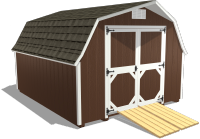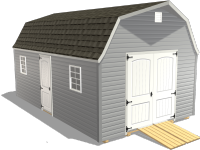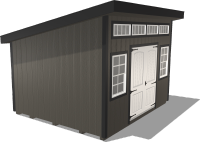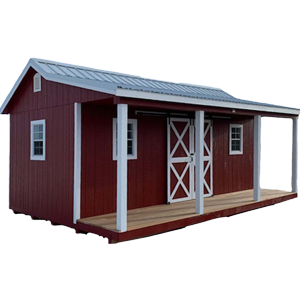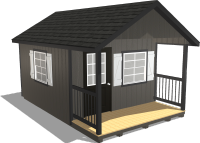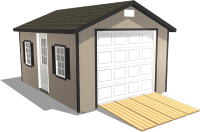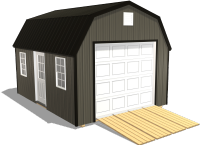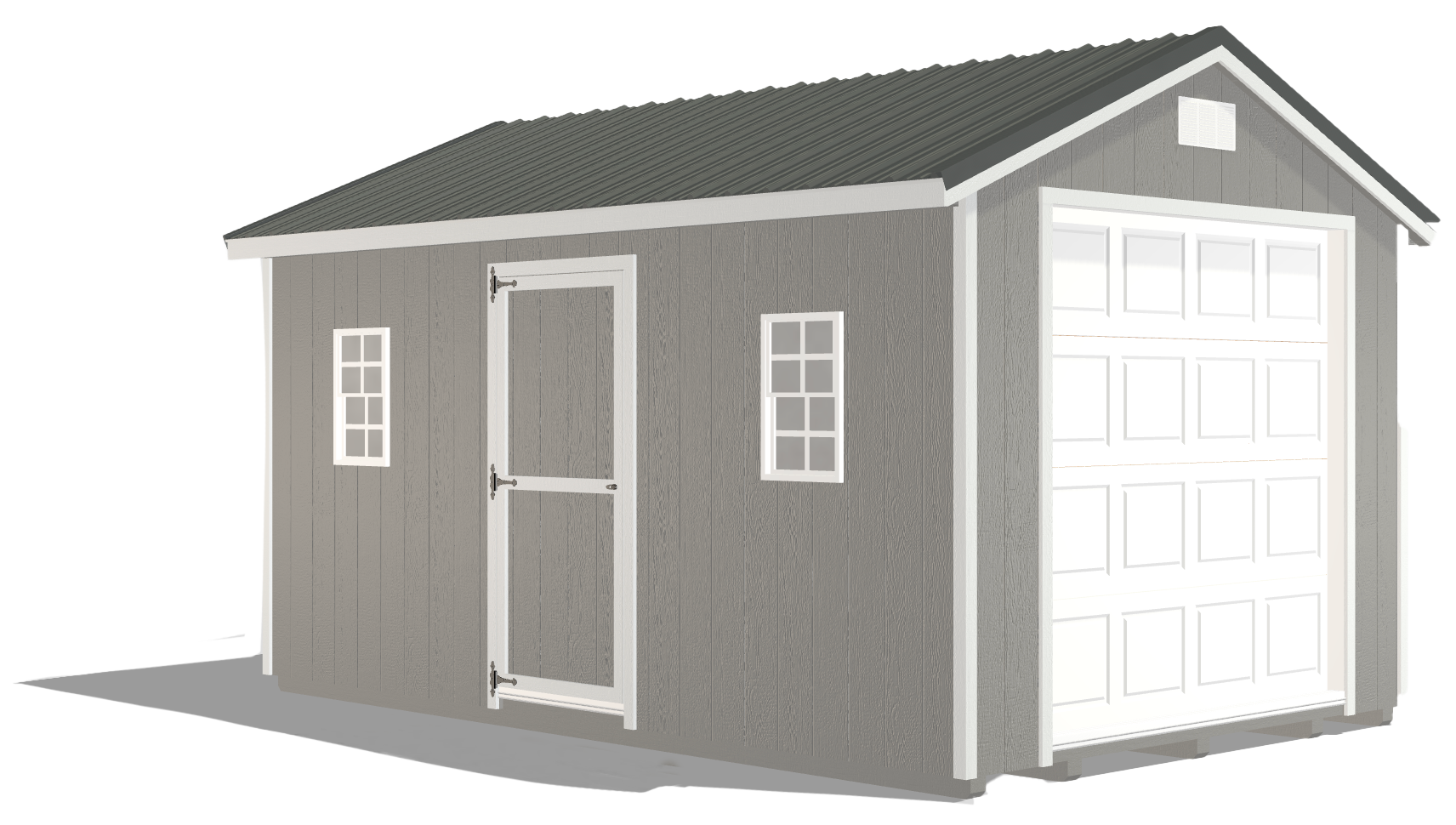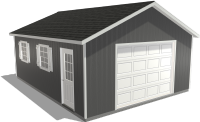5 Essential Tips to Grow a Thriving Garden in Your Greenhouse
by Dakota Storage Buildings, on February 14, 2025

Greenhouse gardening gives you endless possibilities, from growing plants year-round to cultivating unique varieties that might not thrive outdoors. However, managing a greenhouse effectively requires more than planting seeds and hoping for the best. Without proper planning and care, you risk limited yields, pest issues, or unhealthy plants. To help you maximize the potential of your garden in greenhouses, we have compiled five essential tips for designing, maintaining, and sustaining a productive garden.

A well-thought-out layout is the foundation of greenhouse gardening success. Efficient organization maximizes space and ensures your greenhouse plants receive the care and attention they need.
Zoning Your Greenhouse
Begin by organizing your garden in greenhouses into clear zones for different plant types, walkways, and storage. Include pathways wide enough to easily access all plants and consider adding shelving or tiered benches for smaller pots. This setup ensures an organized and productive environment. Allocate space for tools, fertilizers, and watering equipment to keep everything you need within reach and reduce clutter.
Selecting the Best Plants
Select plants that grow best in greenhouse conditions. Leafy greens like lettuce and spinach thrive in cooler months, while tomatoes and peppers flourish during warmer seasons. Tailoring your plant selection to seasonal conditions ensures consistent growth and yield. Consider incorporating companion planting strategies that can promote healthier growth and deter pests naturally.
Space-Saving Tips
Make the most of limited space with vertical greenhouse gardening techniques, such as hanging pots or wall-mounted planters. Tiered planting systems can also help you grow more plants without overcrowding, creating a lush, productive greenhouse. Adding mobile carts or stackable containers can provide flexible planting options, allowing you to adapt your setup as your garden evolves.

Controlling the environment is one of the biggest advantages of greenhouse gardening. However, keeping the climate stable requires thoughtful monitoring.
Regulate Greenhouse Heat and Cold
Invest in a thermometer and heater to maintain optimal temperature ranges. Most greenhouse plants thrive between 65°F and 75°F but be prepared to adjust for specific varieties. Shade cloths can prevent overheating in summer, while insulation helps retain warmth during colder months. For added convenience, consider using automated temperature control systems to ensure consistent conditions without constant monitoring.
Managing Humidity and Airflow
Proper humidity levels prevent plant stress and support healthy growth. Use hygrometers to monitor moisture and incorporate vents or fans to ensure adequate airflow. This reduces the risk of mold, mildew, and disease. Regularly clean vents and fans to keep air circulation efficient and prevent blockages that could compromise airflow.
Maximize Greenhouse Light
Natural sunlight is crucial, so position your garden in greenhouses to maximize exposure. In low-light seasons, supplement with grow lights to provide plants with consistent illumination, ensuring strong growth year-round. Reflective materials on walls or ceilings can help distribute light more evenly, reducing shadows and ensuring all plants receive adequate exposure.

Healthy plants depend on consistent watering and nutrient-rich soil. Without these essentials, even the most well-planned greenhouse will fall short.
Smart Watering Practices
Avoid overwatering, as it can lead to root rot. Drip irrigation systems or self-watering pots deliver water consistently while reducing waste. Always monitor soil moisture levels to ensure plants get the right amount of hydration. Adjust watering schedules based on the season, as plants may need less water during cooler months and more during hotter periods.
Nourish Your Greenhouse Soil
Start with high-quality, well-draining soil rich in organic matter. Regularly test your soil’s pH and amend it with compost or fertilizers to provide essential nutrients like nitrogen, phosphorus, and potassium. Balanced soil is key to healthy, productive greenhouse plants. Incorporate soil conditioners like vermiculite or perlite to improve aeration and moisture retention for root development.
How Mulching Helps Your Plants Thrive
Apply a layer of mulch around plants to retain moisture, reduce evaporation, and suppress weeds. This simple step can significantly reduce watering frequency and improve soil health. Organic mulches like straw or shredded bark also break down over time, enriching the soil with additional nutrients.

Pests and diseases can quickly compromise your greenhouse’s productivity if not addressed. Prevention is your best defense.
Stop Pests Before They Start
Install mesh screens to block insects and use natural repellents like garlic spray. Regularly clean the greenhouse to remove debris that might harbor pests. Keeping the greenhouse organized and free of standing water can also help deter pests like mosquitoes and fungus gnats.
Early Warning Signs of Pests and Diseases
Learn to recognize signs of common issues, such as yellowing leaves (indicating nutrient deficiencies or pests) or mold spots (signaling excess humidity). Early detection is crucial to prevent widespread problems. Regular plant inspections and monitoring for unusual growth patterns or discoloration can help catch issues early.
Organic Pest and Disease Treatments
Opt for eco-friendly pest control methods like neem oil or introducing beneficial insects like ladybugs. These natural solutions protect plants without harming the environment or compromising your produce. For fungal issues, consider applying organic fungicides or using homemade solutions like baking soda spray to manage outbreaks effectively.

Routine care is the secret to a thriving garden in greenhouses. Regular checks and upkeep keep your greenhouse plants healthy and productive.
Spot Issues Early
Inspect plants weekly for signs of stress, pests, or diseases. Quick action can prevent minor issues from escalating into major problems. Use a magnifying glass or smartphone camera to closely examine leaves and stems for early signs of infestations or nutrient deficiencies.
Routine Tasks for Healthy Plants
Pruning dead leaves, cleaning tools, and adjusting climate controls should be part of your regular maintenance schedule. Seasonal tasks, like replacing worn materials or adjusting light levels, also contribute to long-term success. Regularly checking irrigation systems and vent mechanisms ensures consistent performance and prevents unexpected failures.
Track Your Green Thumb
Maintain a gardening journal to track planting schedules, climate adjustments, and pest treatments. Documenting your observations helps you refine your practices over time and build a more efficient gardening routine. Include photos and notes on plant progress to identify patterns or strategies that yield the best results.
Set the Stage for Year-Round Greenhouse Gardening Success
Greenhouse gardening is as rewarding as it is challenging, but with the right strategies, you can create a thriving environment for your plants. By focusing on layout design, climate control, soil and water care, pest prevention, and consistent maintenance, you will set the stage for year-round success.
Ready to elevate your greenhouse gardening game? Explore our stock greenhouses today and discover how they can help you achieve your gardening goals!





